 Approved by Dr. Dwight Alleyne, DVM
Approved by Dr. Dwight Alleyne, DVM Why Your Dog Won’t Drink Water & What To Do
Dogs get up to some weird behavior from time to time...but when they suddenly won't drink water, it can be pretty scary! So here are all the reasons why & what you can do to get them hydrated again.
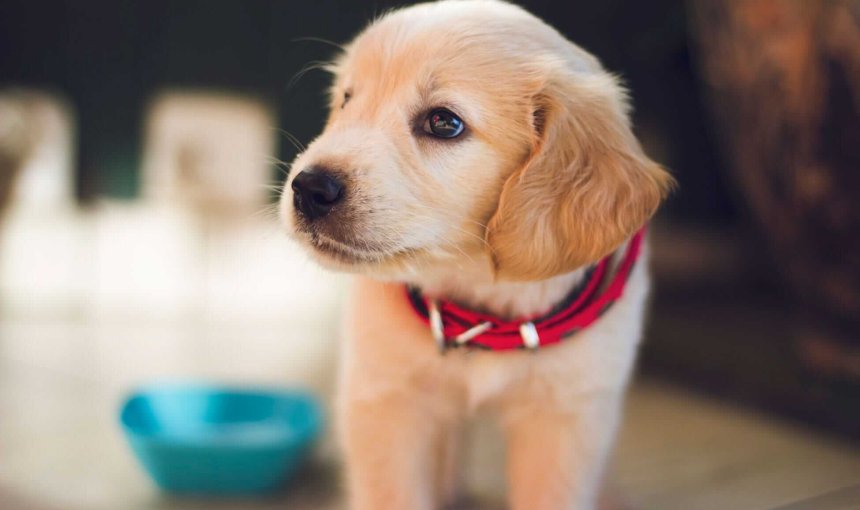
As a loving dog parent, we know you’re doing your best to keep your buddy safe and healthy. So when you come home to find your dog won’t drink water…it’s pretty understandable if you’re worried. So in this post, we’re going to cover the main reasons why your dog won’t drink water and what can you do about it. (Plus, how to pick up on the other, easy-to-miss signs your dog might be sick.)
Key Takeaways
- Common reasons a dog won’t drink water include stress, environmental factors, growing older, and even certain medications.
- A number of medical conditions can also cause your dog to avoid water, including dental pain, joint pain, or even underlying illnesses. (Including cancer.)
- Ideally, a dog should drink 100 ml of water for every kilogram of weight. However, this can depend on their age, size, and activity level.
- A smart dog tracker like Tractive includes Activity Tracking, vital signs monitoring, and Health Alerts to help you pick on to the subtle signs your dog is sick. (Like a drop in their activity or a change in their breathing or heart rate.)

Always know your buddy is healthy & safe
Read moreThe main reasons why your dog won’t drink water
If you’re suddenly finding your dog won’t drink water, here are a couple of reasons why:
- Stress
For example, if you’ve shifted apartments or are taking them out on a road trip. Dogs can tell the difference between unfamiliar and familiar sources of food and water. So if they don’t recognize the smell, they might not drink or eat. - Environmental factors
Like, for example, unclean water, the wrong temperature, or a bowl that’s too high, low, or in a noisy part of your home. - Growing older
Which can cause your dog to grow less active over time – so they’re less hungry or thirsty overall. - Certain medications
Which can cause your dog to drink less water as a side effect. - Fear or anxiety
Which can cause your dog to avoid the water bowl. (Like if they’ve experienced being jostled aside by other dogs or someone stepping on their tail or paw.) - A lack of exercise
Which means your dog just isn’t likely to be as thirsty as usual.
Medical reasons your dog won’t drink water
Pain and discomfort
Pain is a primary reason a dog might avoid drinking water. The act of bending over to a water bowl and swallowing can be agonizing for a dog with certain conditions. This could also include:
- Dental pain
One of the most common and overlooked causes of a dog not drinking is dental pain. Issues like severe gingivitis, a cracked tooth, an abscess, or a foreign object lodged in the gums can make it incredibly painful to open their mouth, lap water, and swallow. If your dog is eating soft food but avoids water, or shows reluctance to chew on one side of their mouth, dental problems are a strong possibility. - Joint pain
Dogs with arthritis, particularly in their neck, back, or hips, may find it painful to lower their head to a water bowl. The physical strain of bending and maintaining that position can be too much. You might notice they are hesitant to get up or lie down, or that they have a stiff gait. Elevating the water bowl can sometimes help, but it doesn’t address the underlying pain. - Injury
After surgery or an injury, a dog may be too sore to move comfortably to their water bowl. They may also be experiencing generalized pain that makes them feel unwell and uninterested in drinking.
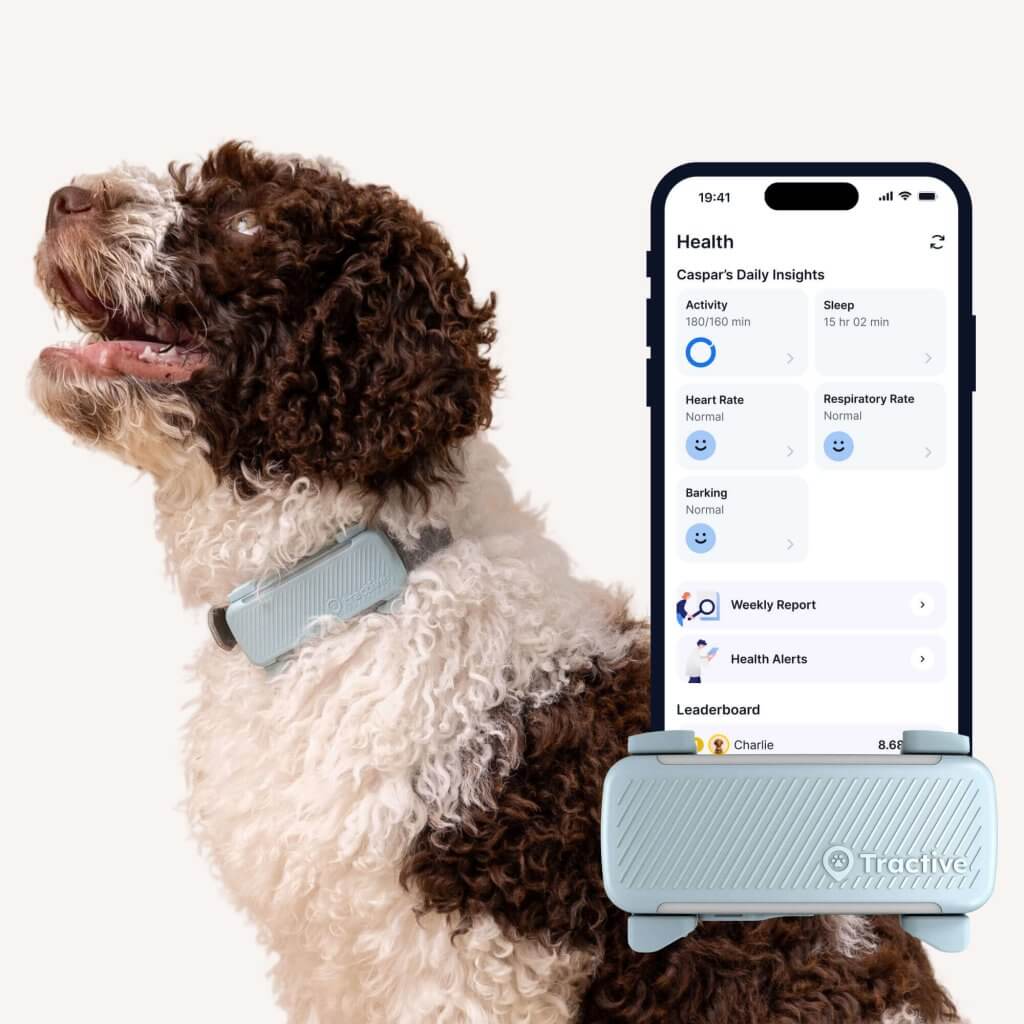
Get health alerts for your dog
Our pups can’t always tell us if something’s wrong. But if their tracker detects unusual changes in their routine, you’ll get an alert, helping you catch potential issues early.
Gastrointestinal Issues
Illnesses affecting the digestive system can cause a dog to lose their appetite and thirst. Conditions like gastroenteritis, which is an inflammation of the stomach and intestines, can be caused by viruses, bacteria, parasites, or dietary indiscretion. Dogs with gastroenteritis often experience nausea, vomiting, and diarrhea, which makes them feel unwell and reluctant to eat or drink. While dehydration is a serious risk with this illness, the initial symptom might be a refusal to drink.
Systemic and chronic illnesses
A dog’s reluctance to drink can also be a symptom of more serious, systemic diseases. Like, for example:
- Kidney disease
Early-stage kidney disease often causes a dog to drink more water. However, as the disease progresses to a more severe stage, dogs can become very ill, with symptoms like nausea, vomiting, and lethargy. At this point, they may stop drinking water altogether, which is a sign of a medical emergency. - Cancer
An underlying cancer can cause a general feeling of malaise, pain, or nausea, all of which can suppress a dog’s thirst drive. The location of the tumor can also play a role; for example, a tumor in the mouth or throat could make drinking painful. - Infections
Any systemic infection, whether bacterial, viral, or fungal, can make a dog feel sick and lethargic. This can lead to a loss of appetite and thirst. In addition to a refusal to drink, you might notice a fever, lethargy, or other signs of illness.
Is water important for your dog?
Dogs, like humans, need to drink water every day. And much like us, they’re at risk from dehydration if they don’t. In fact, dogs are actually at greater risk than humans because they release heat from their bodies much more slowly. Dogs do have some sweat glands in their foot-pads, but not enough to cool their body. As a result, they control their body temperature mostly through panting.
This is why water is so important for dogs and why you should provide your buddy with enough water every day.
How much water does a dog need?
As a general rule, the amount of water a dog needs to drink in a day is equal to 100 ml of water for every kg of body weight. However, other factors do play a role in how much water a dog needs in a day. For example, Dr. Jürgen Zentek – head of the Institute for Animal Nutrition at the University of Berlin – found that the amount of water your dog needs to drink depends on factors like:
- Their size
- How active they are
- The overall temperature
- And the type of food you’re giving them
Based on his formulas we created this chart of how much water a dog needs in a day. So you can find out how much water your dog should be drinking on any given day:
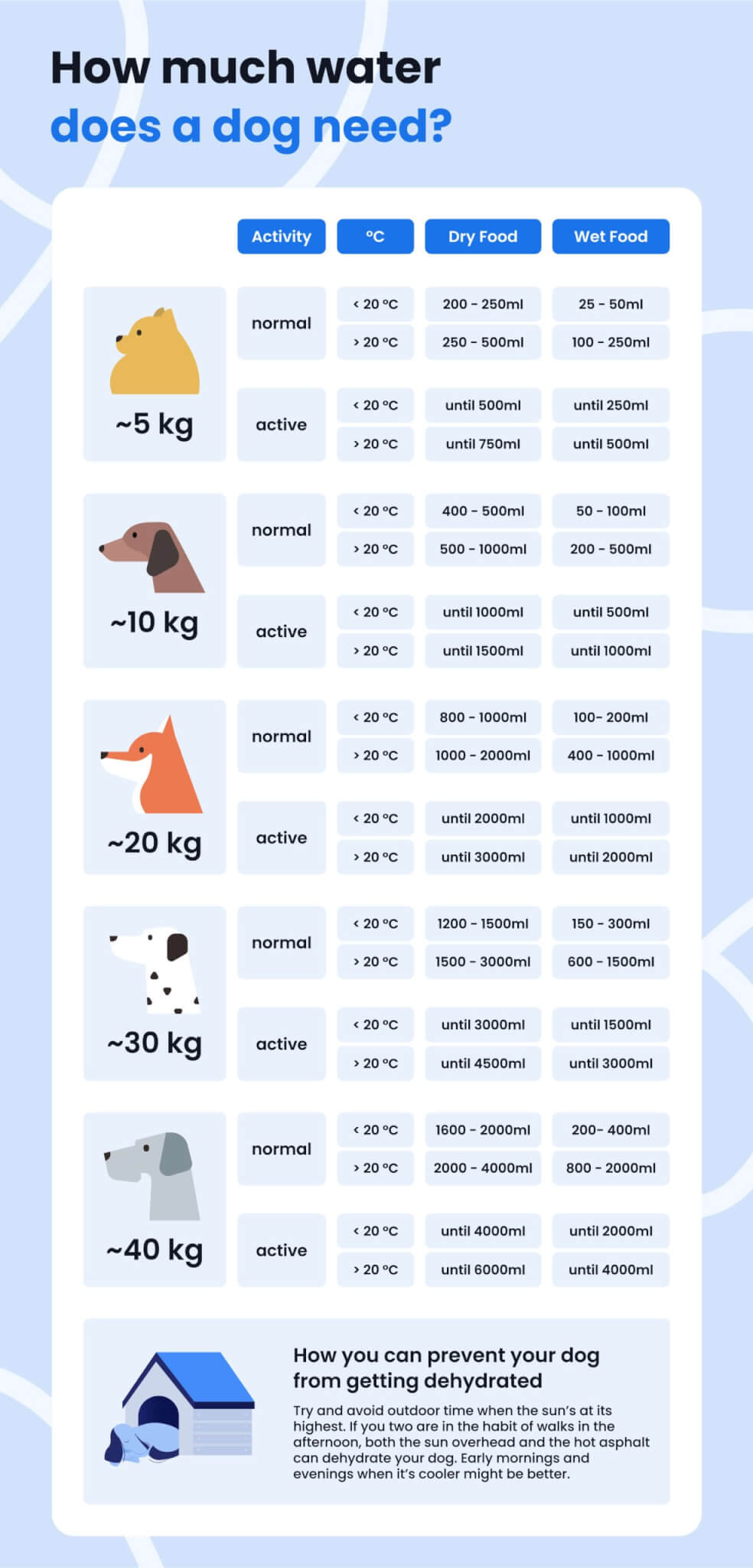
When to head to the vet
If your dog isn’t drinking water for an extended period, keep an eye out for any other signs of illness. A dog can only go 2-3 days without water before serious health complications arise.2 Drop by your vet’s clinic if you notice your dog:
- Refusing water for more than 24 hours.
- Showing other symptoms of illness, including vomiting, diarrhea, lethargy, excessive panting, dry gums, or loss of appetite.
- Showing signs of dehydration, like sunken eyes, dry nose, loss of skin elasticity, or dark, concentrated urine.
Trust your instincts – if something feels off with your dog, it’s better to be cautious and consult a vet.
What to expect at the vet
Your vet will begin by figuring out the underlying cause behind why your dog isn’t drinking water. This includes if it’s because of dehydration or another health problem. Here’s what you can expect:
- A full physical examination
Including checking for visible signs of dehydration, discomfort, or illness. They might look at your dog’s gums, skin elasticity, and hydration levels. - Questions about your dog’s recent behavior
Be prepared to answer questions about your dog’s water intake, eating habits, activity levels, and any recent changes in behavior or environment. - Diagnostic tests
Depending on your vet’s initial findings, they may recommend tests like:- Bloodwork to check for infections, kidney issues, or other systemic problems.
- Urinalysis to identify signs of dehydration or urinary tract infections.
- Imaging (X-rays or ultrasounds) to rule out blockages or internal issues.
- Treatment
Like, for example, administering fluids, if dehydration is the underlying cause. This could be done through subcutaneous (under the skin) or intravenous (IV) fluid therapy, depending on the severity. - An ongoing treatment plan
Once your vet figures out why your dog isn’t drinking, they’ll recommend a treatment plan. This could involve medications for infections, changes in diet, or pain relief for dental issues.
How to get a dog to drink more water
If your dog won’t drink water like they used to, there’s a few things you can do:
- Change the position of the water bowl
If you have multiple pets at home, it’s a good idea to feed them in separate areas. - Mix wet dog food with water
Else, you could add some broth to your dog’s water for some extra flavor. - Carry some bottled water from “home”
In case you’re shifting houses or on a road trip. The familiar scent might entice your dog to drink. - Switch up your water source
Like, for example, letting your dog drink from the water hose instead. Or you could give them an ice cube to gnaw on instead. - Clean the water bowl and water
Your dog can sniff out “dirty” water or an unclean water bowl, which might make them avoid it. - Exchange the water bowl
Try to avoid water bowls made out of metal. Your dog might get spooked by the noise. Use a glass water bowl if possible. - Provide more bowls
Offer your dog the possibility to drink out of multiple bowls of water, placed in different areas. - Contact your vet
Especially if your dog still won’t drink water, or if he/she is suffering from an illness. In case of illness, proper hydration is important to the recovery process.
If my dog won’t drink water, can my dog drink milk?
Generally, this isn’t recommended. As they grow older, most dogs lose the enzyme that helps them digest lactose.4 (So, yes, it’s possible your dog might be lactose intolerant.) At the same time, fermented products, like hard cheese, yogurt or buttermilk, contain a smaller amount of lactose. Because of this, they’re less harmful.
Some dogs will tolerate milk better. This category includes mostly livestock guardian dogs, since milk (products) were often the only ones available. In this case, make sure to choose a lactose-free milk.
Where a smart dog tracker can come in handy
While we all know dog trackers are great for finding a lost dog, the health features on devices like the Tractive smart dog tracker can be a potential lifesaver if you’re worried about your dog not drinking. By getting a good sense of your dog’s normal habits, these features can help you spot subtle changes you might miss otherwise.
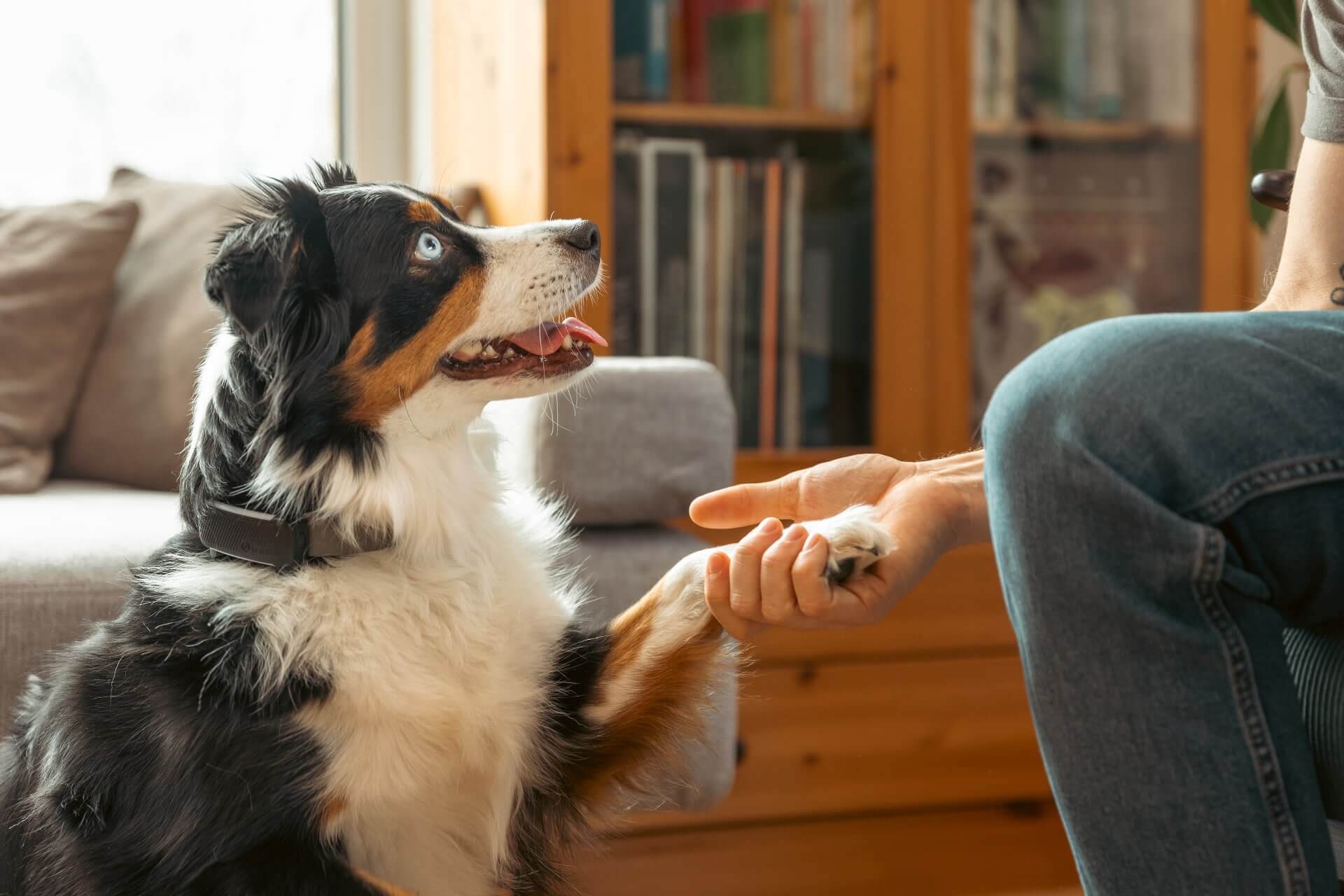
Strapped to your dog’s collar, you can now:
- Monitor your dog’s daily activity
Tractive’s built-in motion detector keeps an eye on how much your dog moves around each day. If your dog is in pain – maybe from a toothache or arthritis – they’ll probably move less to avoid the discomfort. This drop in activity might happen right when you notice they’re not drinking. So you can connect the dots and realize something is off. - Keep track of your dog’s vital signs
The Tractive tracker can also monitor your dog’s vital signs, like their resting heart and respiratory rates. An illness like an infection or a systemic disease can cause these vitals to change. If your dog is lethargic and not drinking, a change in their resting heart rate or breathing could be a crucial early warning sign that something’s wrong.
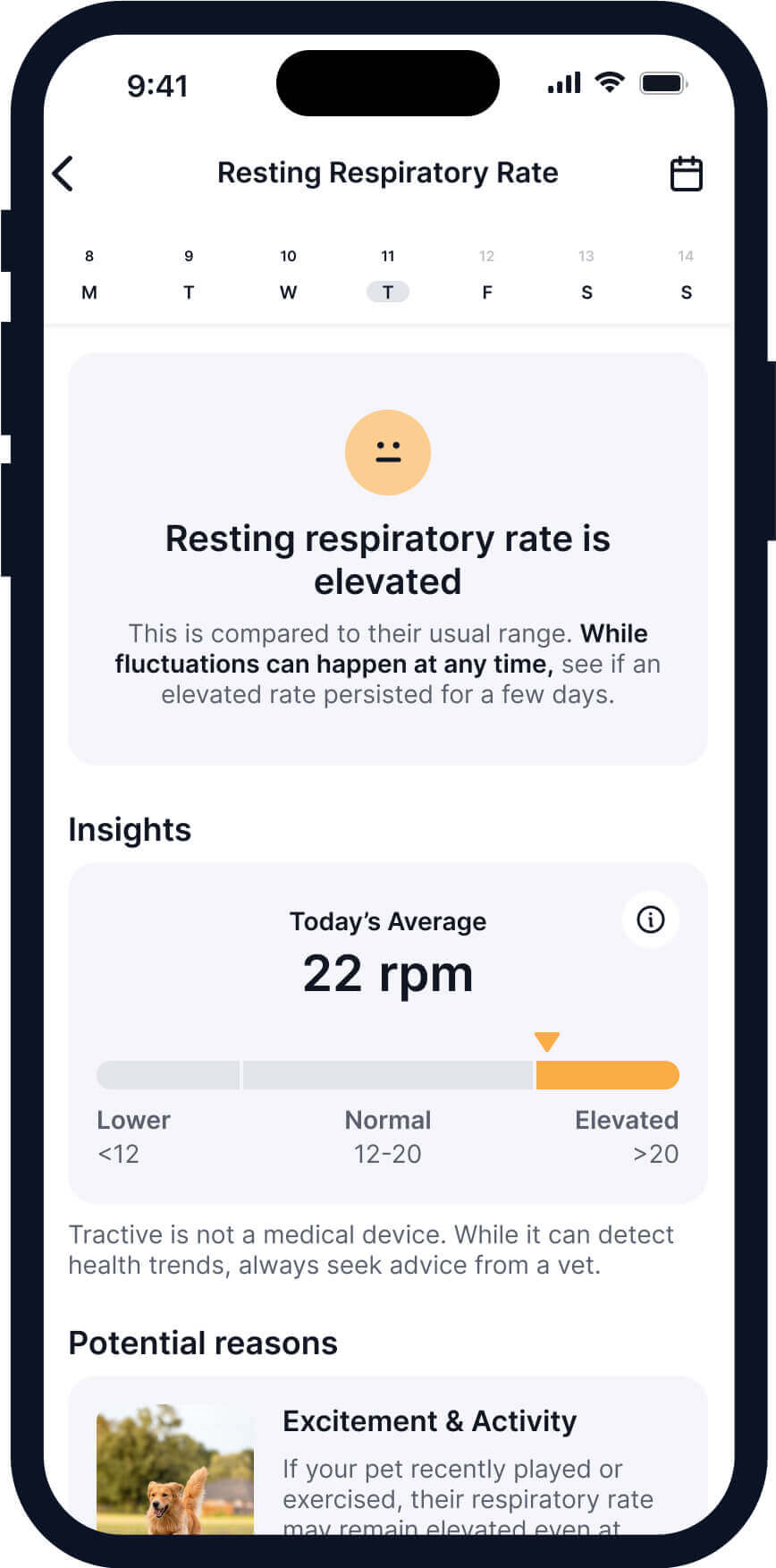
- Spot potential health issues early
Your tracker learns what’s normal for your dog’s activity and sleep patterns. If there’s a big, lasting change – like a sudden drop in activity or more restless sleep – you’ll get a Health Alert. This alert acts like an early warning system. So you can take a closer look and realize that their lack of thirst could be part of a bigger health problem.
By giving you this heads-up, a smart tracker can help you get your dog to the vet sooner. Which can make all the difference in a quick diagnosis and recovery.
Your furry friend’s health and wellbeing means as much as to us as it does to you. So we’ve made it a priority to only share medically-relevant content on our blog. This post was checked, double-checked, and medically verified by Georgia-based vet, Dr. Dwight Alleyne.

Dr. Dwight Alleyne, DVM
Originally from Long Island, New York, Dr. Alleyne began his career at a no-kill animal shelter before becoming a licensed veterinary technician. He graduated from Cornell University Veterinary College in 2006 and completed an internship at Purdue University. Now practicing in Georgia, Dr. Alleyne specializes in soft tissue surgery and ultrasounds. He also writes pet health articles on his website, “The Animal Doctor Blog” (www.anmldrblog.com).



